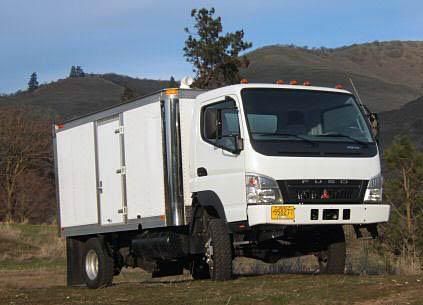Gold Boy
Adventurer
OutbacKamper said:Bear in mind that I have never personally driven a DRW off road:
Many people say that SRW's handle much better off road, especially in ruts (ie: sand, mud & snow). The Aussies have way more offroad driving that is accessible to a large off-road camper than you will find in North America. I talked to a tour bus driver in Western Australia who was driving a DRW Canter (Fuso) tour bus and he said if he owned one, the first mod would be to switch to SRW's. I can put you in touch with an Aussie company that builds lots of Canter buses and RV's and use super single steel wheels.

Cheers
Mark
thanks Mark
please do put me in touch with that company.
Jeep said:We have put super singles on many HD trucks. We use Alcoa and if you watch the offset you can get one wheel that will work on both ends of the truck as they can be ordered reversible. I do not know if Alcoa makes a wheel with your required pattern. I have had Canadian Wheel Industries supply me with shells and I would install the centers on odd ball applications, I just got a set of wheels for one truck running 53" Michelin XZL's from Stockton Wheel and they were cheaper than buying shells, laser cutting centers, and building them myself. They were built to specs I provided and fit great. If you set your track width properly you will not be adding any extra stress, you may be reducing stress by reducing the rotating mass of a set of duals. You will increase driveline stress as the tire size grows in diameter and gearing is not compensated for.
Good luck, great project,
Mark
thanks also Mark
i know this is a redneck question......
but can i put the front rims "wrong way around" on the rear?
thanks
Simon :26_7_2:

